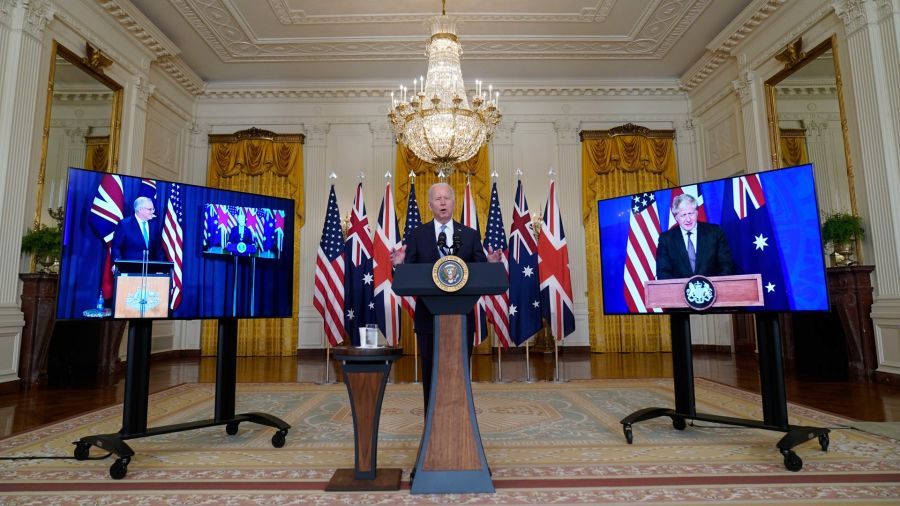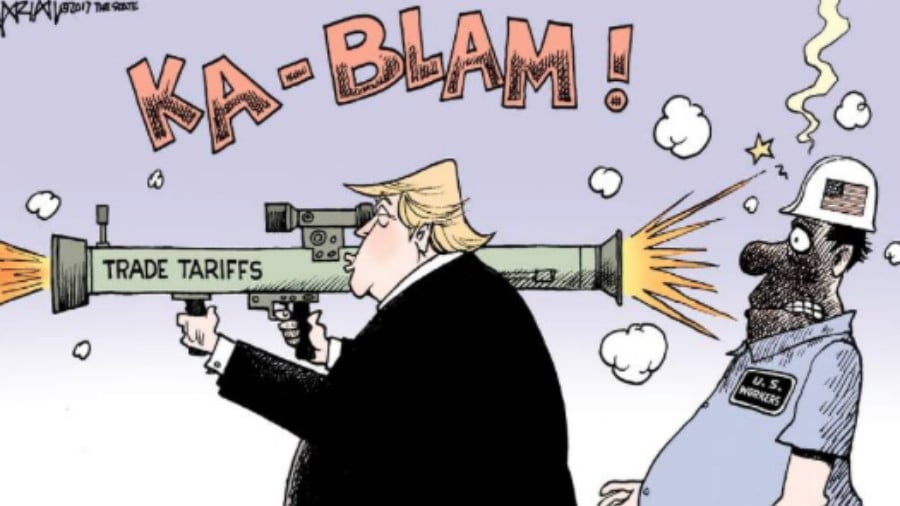Are the Comforting Statements of QUAD and AUKUS Founding States to be Beli?
During the Shangri-La Dialogue security conference taking place in Singapore from June 2-4, US Secretary of Defense Lloyd Austin stated that the United States is not trying to form a new Western defense-oriented NATO-like bloc in the Asia-Pacific region. The Pentagon chief ascertained those present that the interests of European powers in the region are not only military-related, and therefore, of course, Europe “is present here” because it wants to guarantee the preservation of “good relations with the countries of the region.”
Australian Deputy Prime Minister Richard Marles echoed his American counterpart. According to him Canberra sees no signs of NATO being “exported” to the Indo-Pacific region, and the country’s alliances with Western nations, such as QUAD and AUKUS, are aimed at maintaining peace in the region and exchange of military technologies, including nuclear technology, through which Australia intends to ensure collective security and a rules-based order.
Statements by US and Australian senior officials appear to be a response to China’s leadership accusations that Washington is waging a campaign to contain China and thus poses unprecedented challenges to Beijing, and that the real purpose of US strategy in the Indo-Pacific region is “to surround the PRC,” including by creation of “an Asia-Pacific version of NATO and undermining regional integration.” However, the pacifying messages from the US and Australian representatives do not look sincere at all against the background and in the context of the events that occurred the day before, during and immediately after the Singapore conference.
For example, in the midst of the Shangri-La Dialogue (June 3 to 5), Japan, the United States, Australia and, more importantly, NATO member Canada held their first three-day joint maritime exercise in the East China Sea. The purpose of the exercise was to practice cooperative maritime skills as part of a free and open Indo-Pacific region. The US and Canadian ships passed through the Taiwan Strait on their way to the exercises, which, naturally, was perceived by China as a provocation.
At the same time and at the same place, right on the sidelines of the conference, the defense ministers of the United States, Japan, Australia, and the Philippines, meeting in this format for the first time, agreed to strengthen defense cooperation in the Indo-Pacific region.
The intensification of Washington’s steps on the Indian track is worthy in particular attention in light of the fact that in early 2023 the White House IPR Coordinator Kurt Campbell singled out India as the main focus of US diplomatic activity this year.
The May 24 publication of the clumsy recommendations of the US Congressional Special Committee on Strategic Competition between the United States and the Chinese Communist Party deserve mention here, which stated that “winning the strategic competition with the CPC and securing Taiwan requires Washington to strengthen ties with allies and security partners, including India,” that “India’s inclusion in NATO Plus security mechanisms (which, recall, in addition to NATO member countries include Australia, New Zealand, Japan, South Korea and Israel) would underlie the close partnership between USA and India aimed at strengthening of global security and deterrence against CPC aggression in IPR.”
The Indian Ministry of External Affairs, represented by its head, was forced to issue a flowery statement without offending the United States, to deflect suspicions arising in the states of the region, especially China, about the beginning of the official New Delhi movement towards closer cooperation with Washington and NATO on the anti-Chinese platform.
Yet New Delhi’s military and military and technical cooperation overseas partners, and especially the United States, did not give the Indian leadership a chance to smooth things over. On June 8, Ely Ratner, the US Assistant Secretary of Defense for Indo-Pacific Security Affairs, announced that the United States and India will make major milestone announcements on military and technical cooperation during Prime Minister Narendra Modi’s upcoming June 22 state visit to Washington. Ratner also expressed confidence that the converging strategic interests of India and the United States would lead to “a stronger US-India partnership,” with the two countries’ Armed Forces operating together in “the Indian Ocean, the South China Sea, and possibly beginning to operate in the Western Pacific as well.” He also claimed that the US was seeking to integrate India into military engagements with Japan, Australia and the Philippines.
Obviously, statements of American and Australian representatives at the Shangri-La Dialogue are fundamentally at odds with what their governments are doing to militarize the APR.
Unfortunately, only a handful of state leaders in the region dare to criticize pro-Western alliances such as the QUAD, AUKUS, and NATO. These includes Cambodian Prime Minister Hun Sen, who said that military alliances such as NATO and AUKUS are becoming a problem for ASEAN countries because of their expanding influence in the region. “Now the Asian region is becoming an object of dangerous tension because of the activity of NATO countries, as a number of states have announced that they are sending warships closer to Southeast Asia and are heading for the South China Sea,” Hun Sen stressed.
It is time for other ASEAN member states to understand clearly the mendacity of the Western leaders’ appeasement speeches about their commitment to peace and their lack of aggressive plans, and to speak in unison against the growing US and European involvement in the Asia-Pacific region.







